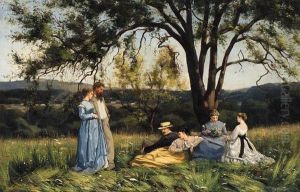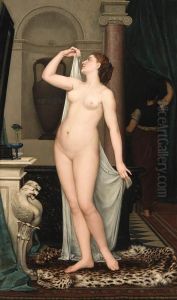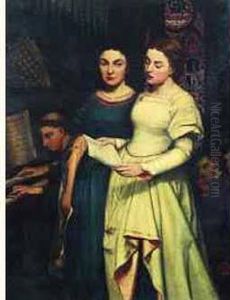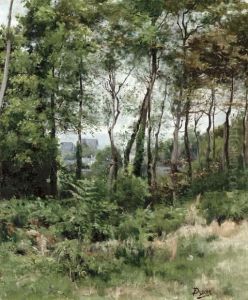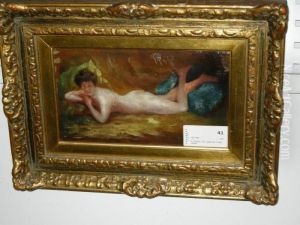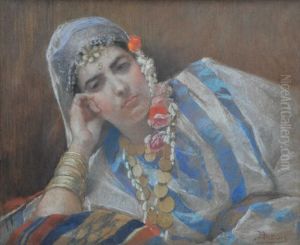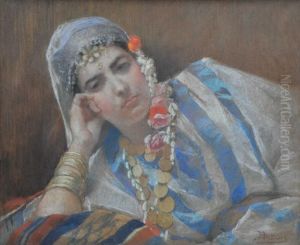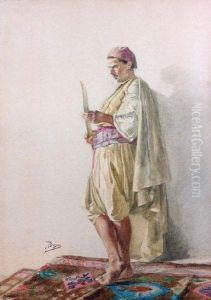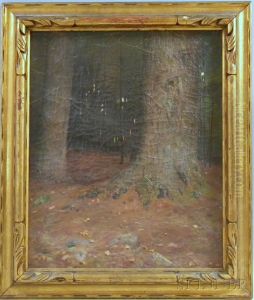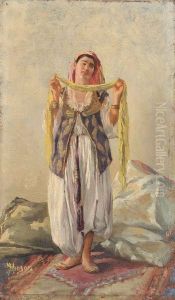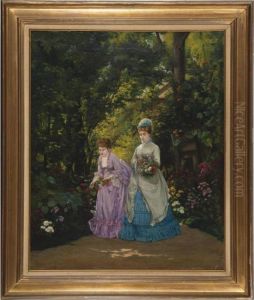Hippolyte Henri P. Dubois Paintings
Hippolyte Henri P. Dubois was a French sculptor of considerable renown in the late 19th and early 20th centuries. Born in 1837, Dubois was part of a period in art history that saw a transition from the classical traditions of the past to more modern interpretations and techniques in sculpture. His work, characterized by its detailed craftsmanship and emotional depth, reflects the broader artistic movements of his time, including Romanticism and the beginnings of Modernism.
Dubois received his artistic training at the École des Beaux-Arts in Paris, the premier art institution in France, which was a breeding ground for many of the era's most prominent artists. Under the guidance of established masters, Dubois honed his skills in both sculpture and drawing, disciplines that would inform his later works. His early career was marked by traditional themes and techniques, but he gradually embraced a more innovative approach, experimenting with form and subject matter.
Throughout his career, Dubois exhibited his works at the prestigious Paris Salon, the annual exhibition that was the highlight of the French artistic calendar. His sculptures, often inspired by historical and mythological themes, were well received by critics and the public alike, earning him medals and accolades. Among his most celebrated works are statues and busts that capture the essence of their subjects with a lifelike realism and emotional intensity.
Dubois was also notable for his contributions to public art and monuments, a popular genre in the 19th century that commemorated historical figures and events. His works can be found in various locations across France, serving as lasting tributes to his skill and creativity.
Despite his success, Dubois remained relatively conservative in his aesthetic, eschewing the more radical innovations of contemporaries who would go on to define the Modernist movement. Nevertheless, his work bridges the gap between the neoclassical tradition and the evolving artistic landscape of his time.
Hippolyte Henri P. Dubois passed away in 1909, leaving behind a legacy that, while perhaps not as widely recognized today as some of his peers, is a testament to the richness and diversity of French sculpture during a pivotal period in art history. His contributions to the field continue to be studied and appreciated by art historians and enthusiasts alike.
